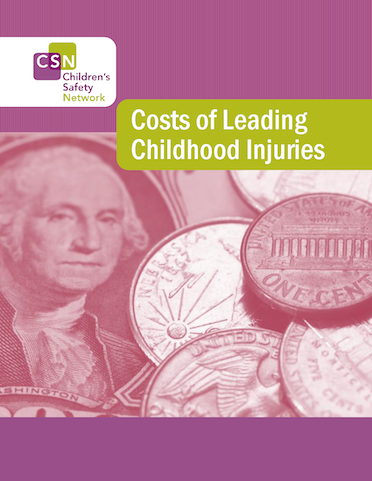
This fact sheet covers the costs of childhood injuries, including medical costs, work loss costs, and quality of life loss costs. Work loss costs include lost wages of injured persons and lost household work, or, in the case of fatality, lost earnings and household work over the victim’s expected remaining lifespan in the absence of premature death. Quality of life loss costs include the monetary value of pain, suffering, disfigurement, and lost capacity to function physically (e.g., lost sensory, mobility, and cognitive functioning, and ability to work and to perform activities of daily living). When combined, medical costs, work loss costs, and quality of life loss costs reflect the societal burden of childhood injuries.
Inside the fact sheet, you will find:
- The five-year trend from 2011 to 2015 in fatalities, hospitalizations, and ED visits for leading causes of injury and
- The medical costs, work loss costs, and quality of life loss costs, as well as the combined costs, for leading causes of injury in 2015.
How to Use Information on Injury Costs
Cost information can help you to:
- Raise public awareness of the burden of childhood injury
- Communicate to stakeholders and decision makers the scope of the problem of childhood injuries
- Help policy makers identify “high cost” injuries and make those injuries a priority for prevention and treatment programs
- Set injury priorities to allocate limited health resources
- Estimate the likely return on investment associated with effective prevention strategies
- Compare the effectiveness, costs, and benefits associated with injury prevention strategies.
This is part of a series on the costs of childhood injuries.
Infographics on the medical costs of childhood injuries: